Were it possible that there could be such a thing as a "lost" Bauhaus building, something wholly unimaginable this of all years, then the best candidate would, arguably, have to be the ADGB Bundesschule in Bernau bei Berlin. Yes, it is on the UNESCO World Heritage List, and so is not really lost; however as an object it only rarely features, and when then invariably passingly, in the popular Bauhaus discourse .... and that despite being built by a serving Bauhaus Director.
With the exhibition Volksbedarf statt Luxusbedarf - Bernau and its Bauhaus the Galerie Bernau aim to not only help increase the works visibility but also allow for a better understanding of its character.
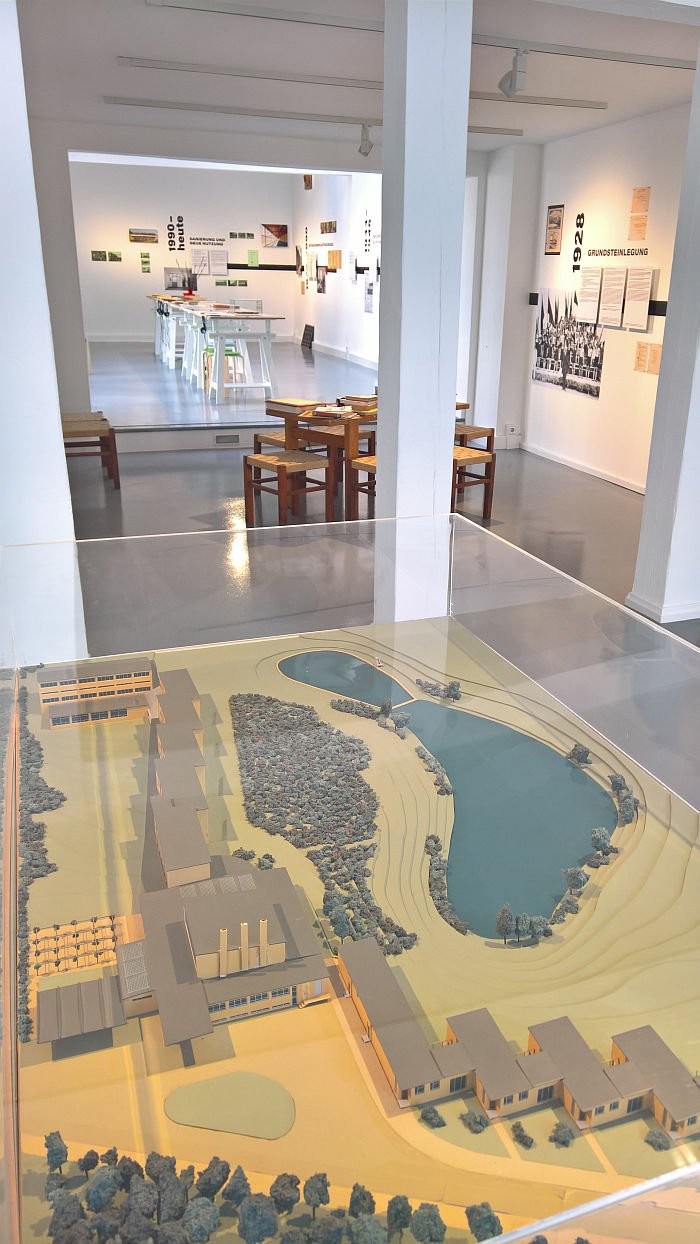
Built by Hannes Meyer and Hans Wittwer between 1928 and 1930 for the German Trades Unions Confederation, ADGB, the story of the ADGB Bundesschule, in many regards, also tells the story of eastern Germany, of the swings and arrows of outrageous fortune the region and its peoples have had to contend with since the end of the First World War.
Which is where the story begins, or more accurately put, the story begins against the background of the political, economic and social changes/rollercoaster of the 1920s, political, economic and social realities which saw the ADGB resolve in 1927 to establish a school in order to better equip and bolster its members for the challenges of the period. Having secured a plot of land near Bernau, a town slightly to the north east of Berlin, a limited architecture competition was organised with Erich Mendelsohn, Max Taut, Willi Ludewig, Max Berg, Aloys Klement & Hannes Meyer invited to submit entries: a list which clearly indicates that the ADGB were looking for a contemporary, Neue Bauen, work, one which should not only symbolise the contemporary nature of the teaching, nor only the ADGB's understanding of contemporary society, but, as jury member Adolf Behne noted, should also help promote the new construction and domestic ideas of the period, should "convey the goals and methods of modern living culture in a pure and compelling form"1
The commission was awarded to Hannes Meyer, who developed his plan in conjunction with Hans Wittwer, and on July 29th 1928 the foundation stone was laid in a tranquil forest setting some 4 kms north of Bernau.
Head of the Building Department at Bauhaus Dessau since 1927 Hannes Meyer was appointed Director on April 1st 1928 and involved the institution closely in the realisation of the ADGB Bundesschule, not only, for example, was (near) all the furniture conceived and realised in the workshops of Bauhaus Dessau, but Anni Albers created a novel light reflecting & sound dampening textile composed of cotton and the, relatively new material, cellophane for the auditorium; a novel material which subsequently became her Bauhaus Diploma project. And therefore as much as being a construction by Meyer and Wittwer the ADGB Bundesschule can, must, be considered a Bauhaus Dessau project.
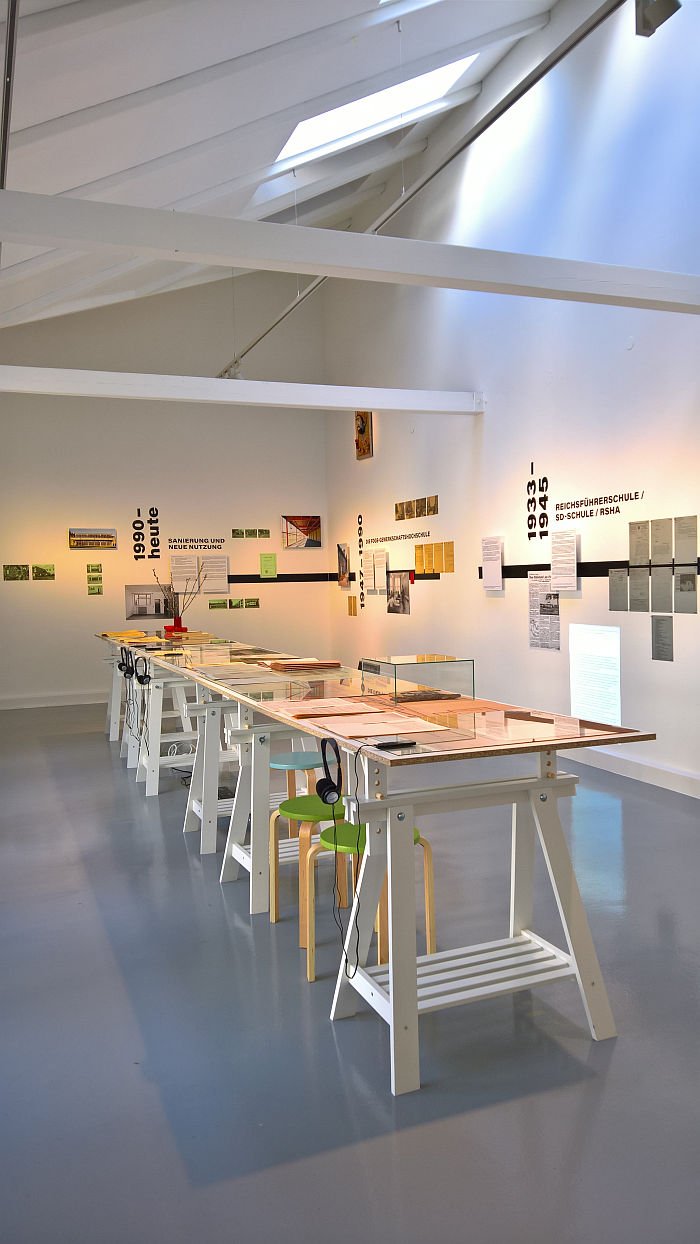
Originally costed at 1.1 million Reichsmark, but ultimately costing some 2.8 million, and thus proving there is nothing new about building projects on the outer edges of Berlin going far over budget, the ADGB Bundesschule opened on 4th May 1930 and was visited by some 5,000 trade unionists before on the 2nd May 1933 a Nazi SA unit occupied the building and brought an end to the ADGB's activities.The following month the building was renamed the Reichsführerschule with Hitler himself being present for the re-opening.
Under the Nazis the Meyer/Wittwer building initially served as a training centre for the leadership of the NSDAP and DAF, the German Labour Front, the Nazis (highly) nominal trades union, before in 1936 it became a training centre for the Sicherheitsdienst, SD, the Nazi's intelligence agency, and where, as we learn from the exhibition, the attack on the radio station Sender Gleiwitz was planned: an operation undertaken by the Nazis, blamed on Poles and thus used as (part of) the justification for the invasion of Poland. Thereby starting World War Two. Fake news isn't a new phenomenon people, and isn't any less dangerous today than then.
Post-war the Meyer/Wittwer building found itself, as with near every building with a direct connection to Bauhaus, in East Germany and where it returned to its function as a trades union school, specifically from 1947 for the DDR's Free German Trade Union Federation, FDGB, whereby the "Free" is and was highly questionable; and thus a change which saw the teaching of Nazi ideology replaced by the teaching of Marxist-Leninist ideology. Under its various guises the FDGB school was visited by some 15,000 East German and 5,000 foreign students, the majority of the foreign students coming from left leaning nations in Asia and Africa, but also western European trade unionists visited the school to deepen their knowledge on Marxist-Leninist philosophy, social economy, trades union history and propaganda.
With the fall of the wall, and the fluidity of the early 1990s in the former DDR, the building switched roles with a dizzying regularity, before in 1998 it found itself empty and unused. In 2001 the Berlin Chamber of Crafts, HWK, bought the building and in cooperation with the association Baudenkmal Bundesschule Bernau, who since 1990 had campaigned not only for the necessary renovations but also a meaningful role for the object, did just that.
In 2017 the renovated ADGB Bundesschule was added to the UNESCO World Heritage Sites list alongside numerous Bauhaus works in Dessau and Weimar, and today the building exists as a seminar building and boarding home for the HWK's training centre in Bernau.
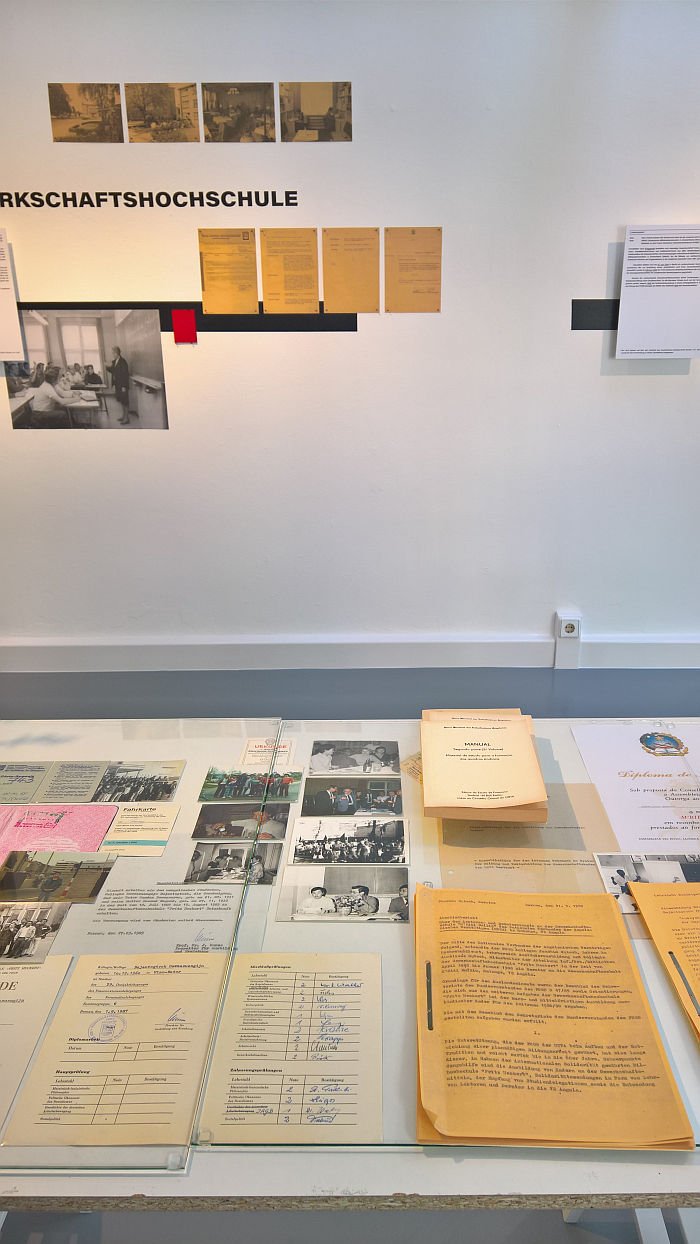
Presenting a fulsome and clearly conceived documentation of the (hi)story of the ADGB Bundesschule from its origins in the late 1920s, Volksbedarf statt Luxusbedarf places a particular focus on the institution's DDR days; and in doing so tells a (hi)story that is as much about the life and times of the school as it is about the building itself.
Or put another way, in addition to plans, photos and documentation which tell the story of the school as a physical structure, Volksbedarf statt Luxusbedarf also documents the daily life of the building during the DDR era, including objects, biographies and oral memories of and from some of those who attended the FDGB school, and in doing so allows for a much more personal, tangible history; and one that in addition to presenting the building as not just a work of architecture, but as a state-run institution also helps visitors better understand the function of the FDGB in disseminating their, and by extrapolation, the ruling SED's Marxist-Leninist understandings amongst East Germans, as well also the nature of the international connections entertained by the DDR.
By necessity of space a, relatively, restricted exhibition Volksbedarf statt Luxusbedarf is nonetheless one that allows for not only an informative presentation of the (hi)stories of the school, but an enjoyable telling of those (hi)stories; one where the small details deliver the entertainment to balance the information of the larger facts, where in the triviality of the school's everyday stands juxtaposed to the much larger reality in which that everyday was lived.
Having viewed the exhibition, a selection of books invite for a deeper reading on both the school itself and also Hannes Meyer, Hans Wittwer and life in the DDR; and thus, for us, neatly underscores that as an exhibition Volksbedarf statt Luxusbedarf should be approached as a starting point, that having visited Galerie Bernau one can, should, must, decamp to a tranquil forest setting some 4 kms north of Bernau.
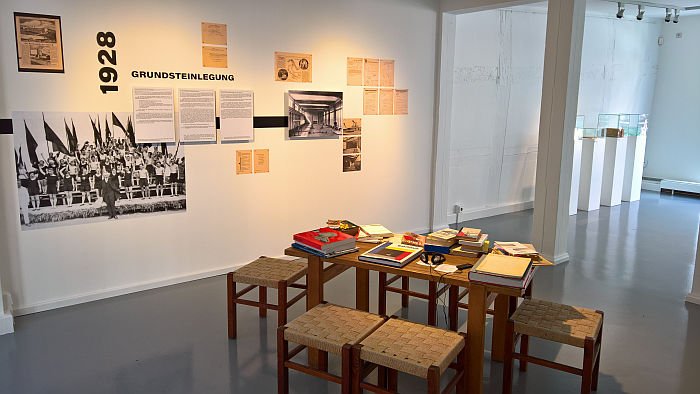
Built by Hannes Meyer and Hans Wittwer between 1928 and 1930..... no... stop..... we've done that bit.......
....described by architecture historian Professor Matthias Noell as "a model example of the reform and community ideas of that period"2, approaching the Meyer/Wittwer building the first thing one notices is how astonishingly compact a work it is; a compactness however that shouldn't be confused for confined, but which more reflects the carefully considered decisions made by Meyer and Witter; not least the manner in which they adapted the building to the slope on which its stands, more or less integrating the slope into the building and letting the slope guide and inform the movement through the building. In addition the clearly defined ordering of the different functions of the building - teaching, accommodation, social - avoid any (potential) wasteful use of space, while the intelligent use of skylights and expansive windows, not least along the central corridor, allow for an airy and naturally illuminated interior, and thereby also helps brings the surrounding forest closer, extending the vista far beyond the walls and into the wilds of Brandenburg. And they're wild. Similarly the houses built for the teaching staff are, intelligently and cleverly placed to optimise the advantages of the location with a minimum of materials or invasion into the surrounding environment; and thereby as a composition the ADGB Bundesschule neatly underscores Meyer's contention that "building is a social, psychological, technical and economic organisation of life's processes"3
And thus, in addition to being able to better appreciate and understand the work, visiting the ADGB Bundesschule also allows one to better approach an understanding of Hannes Meyer and Hans Wittwer, for as Louis H. Sullivan once opined "every building you see is the image of a man you do not see. That the man is the reality, the building its offspring"4, and Hannes Meyer and Hans Wittwer left only few offspring.
As did Bauhaus. So we really can't afford to go losing any; certainly not this of all years.
Volksbedarf statt Luxusbedarf - Bernau and its Bauhaus runs at Galerie Bernau, Bürgermeisterstraße 4, 16321 Bernau bei Berlin until Friday April 5th and is the first in a series of Bauhaus themed exhibitions throughout 2019. Further details, including information on the accompanying fringe programme, can be found at www.galerie-bernau.de
1Adolf Behne, Bundesschule in Bernau bei Berlin. Architekt Hannes Meyer, Preußisches Finanzminiterium, Sonderdruck aus dem Zentralblatt der Bauverwaltung Nr 14, Jg 51 1931, quoted in the exhibition.
2Matthias Noell, Formen der Moderne Neues Bauen im Land Brandenburg, in Brandenburgisches Landesamt für Denkmalpflege und Archäologisches, "Modernes Bauen zwischen 1918 und 1933. Bauten im Land Brandenburg und ihre Erhaltung", Potsdam, 1999
3Hannes Meyer, Offener Brief an Herrn Oberbürgermeister Hesse, Dessau, quoted in the exhibition.
4Louis H. Sullivan, A Terminal Station, in Kindergarten Chat and other writings, Dover Publications, New York, 1979
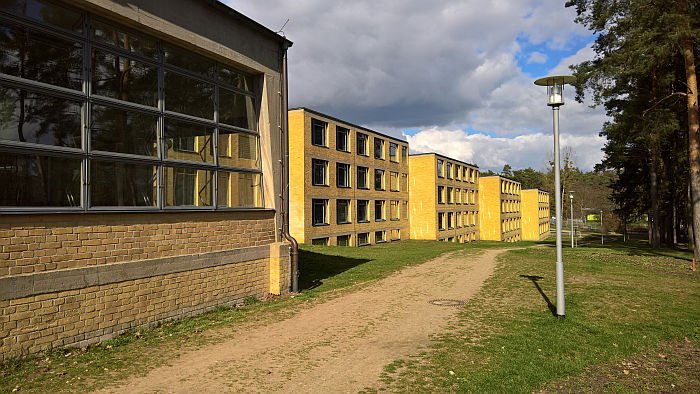
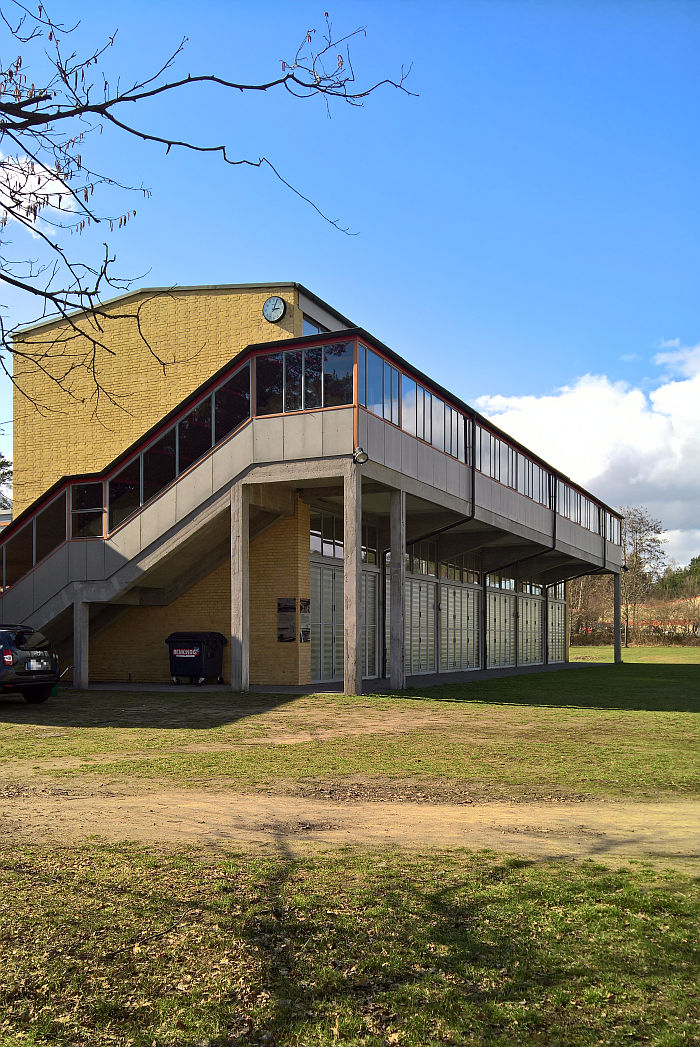
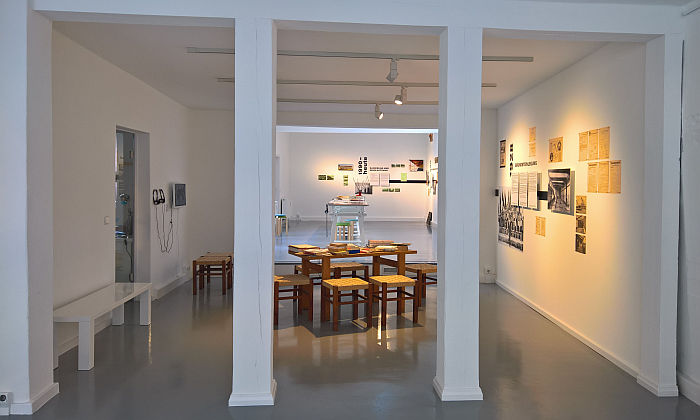
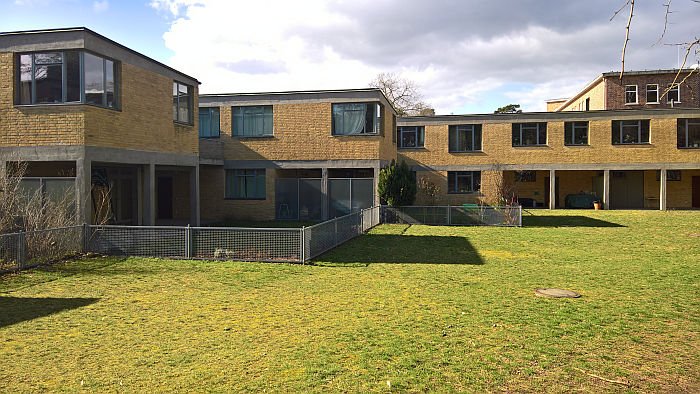
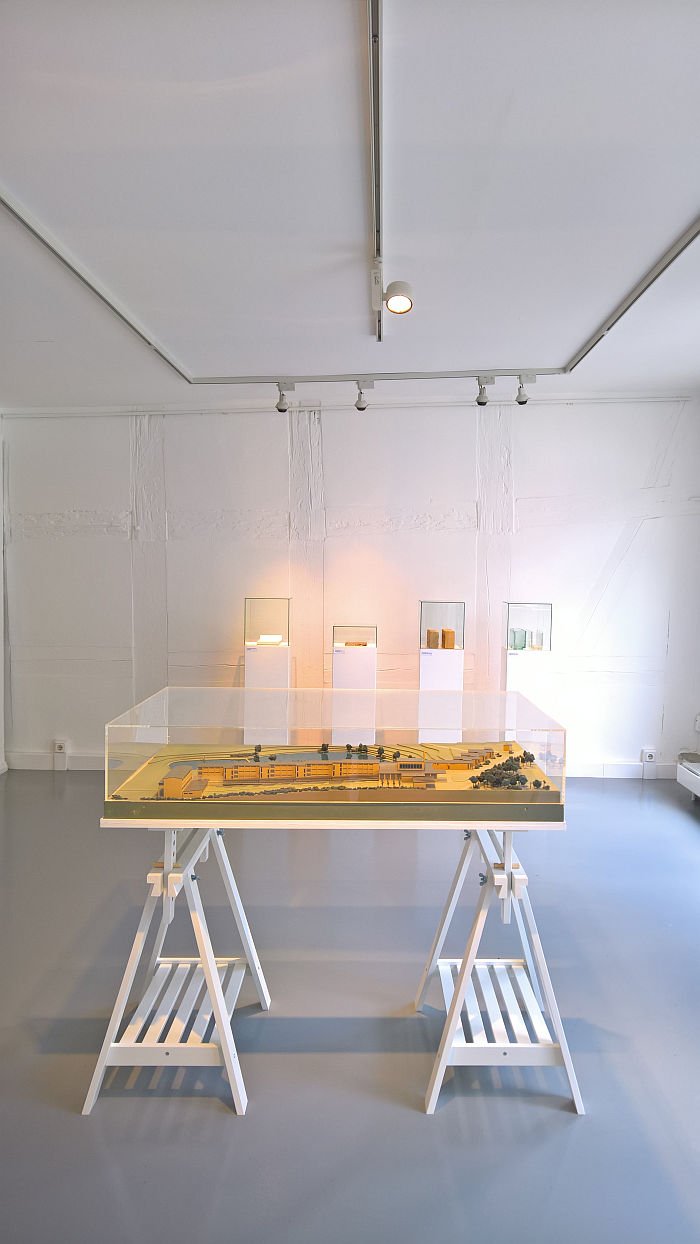
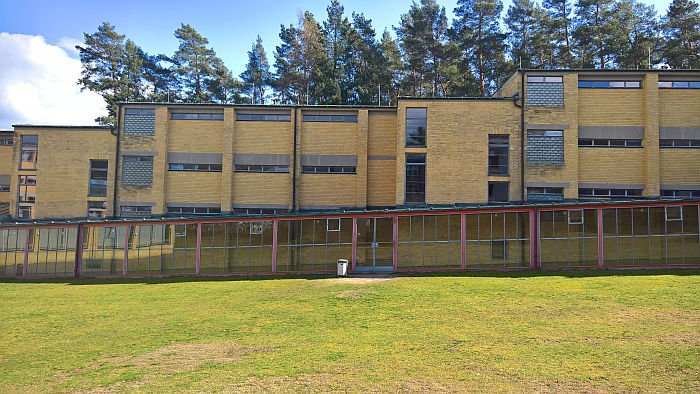
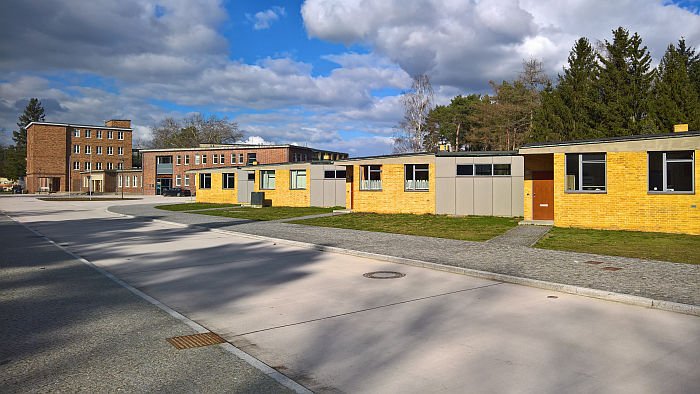
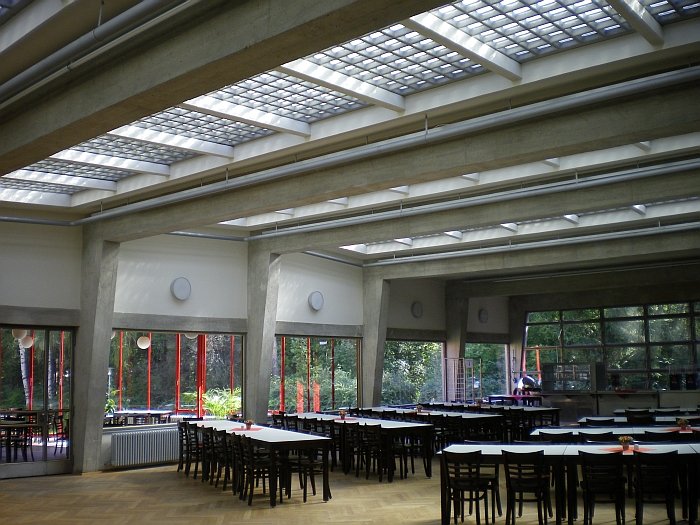
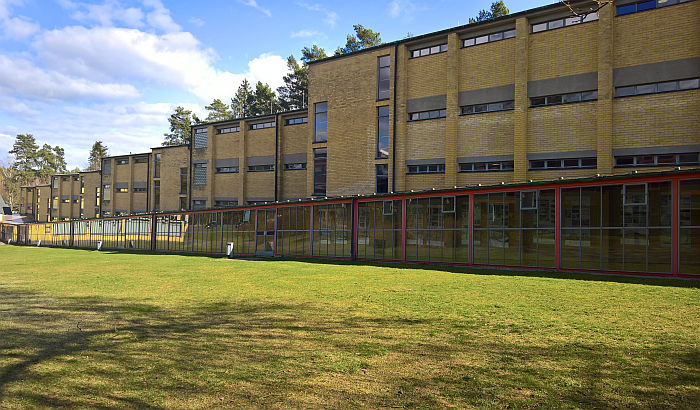
The ADGB Bundesschule can be visited year round, whereby the inside can only be viewed as part of an organised tour. The outside is however freely accessible. Full details can be found at www.bauhaus-denkmal-bernau.de